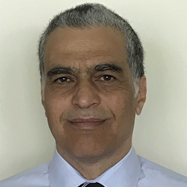
The Virtual Sully Team |
 |
| Prof. Evangelos Theodorou Georgia Tech Aerospace School |
 |
| Prof. Lui Sha U-Illinois - Urbana Champaign |
 |
| Prof. Naira Hovakimyan U-Illinois - Urbana Champaign |
 |
|
Petros G. Voulgaris |
Hollywood celebrated it as "The Miracle on the Hudson," while the National Transportation Safety Board applied a more sober label: "the most successful ditching in aviation history."
For Georgia Tech professor Evangelos Theodorou and his colleagues from the University of Illinois -- Lui Sha, Naira Hovakimyan and Petros Voulgaris -- the 2009 emergency landing of Flight 1549 in the Hudson River was something more: it was a very interesting engineering problem. When a flock of geese disabled his plane, mid-flight, how did Captain Chesley "Sully" Sullenberger sift through the fast-paced barrage of unprecedented mishaps to safely land in the river below?
Under the auspices of a three-year, $1.2 million grant from the National Science Foundation (NSF), the four researchers plan to engineer an answer to that question - one that will not rely on heroics or gut instincts.
"We are designing a pilotless navigation system called the 'Virtual Sully' because it was Captain Sullenberger who, in a chaotic situation, made decisions, mitigated risk, and guided the plane to safety," says Theordorou, who heads up AE's Autonomous Control and Decision Systems lab.
The Virtual Sully Team will be simulating a system that can make navigational decisions in real-time, similar to a human being. Ultimately, this will lead to the creation of a pilotless navigation system capable of operating dependably in countless adverse conditions.
For his part, Theodorou will develop algorithms that can optimize the trajectory and control of a vehicle, with an emphasis on representing uncertain conditions, like sudden weather, mechanical malfunctions, or, as in the case of that 2009 miracle, geese in the engine. Theodorou will also investigate different variations of model predictive control algorithms that can be used to define real-time decision-making.
"To predict the future, you need to make decisions about your environment, and then you have to create a model that explains the future. But, with models, you know that they are always wrong. So the question becomes, 'how do you incorporate uncertainty into the decision making models?'," Theodorou asks.
"The better you are able to characterize your level of uncertainty, the more predictive your model will be."
"We will be building a hierarchy of decision-making modules that will make decisions in different time scales, and my part is to determine how uncertainty is incorporated into this process," Theodorou explained of the NSF project.
At the top of this hierarchy are long-term decisions, ones that consider events that will happen miles away or far into the future, for instance. Those longer-term decisions are valuable, but they have more epistemic uncertainty and incur a greater computational cost. If a decision has a closer horizon, it will be less costly to compute, but it must be solved in an abbreviated time scale.
Sizing up the task before him, Theodorou says he is fascinated by the challenge his team will undertake.
"There is some interesting neuroscience literature in the area of goal driven decision making. It suggests that when a biological system navigates a situation, it develops a cognitive map that helps to forward simulate different scenarios to make a decision. I am wondering whether pilots have similar underlying neural mechanisms. While this grant is not directly addressing such questions it will certainly generate the research results for our next scientific steps and directions in the area of autonomy that are more on the high risk-high reward side"